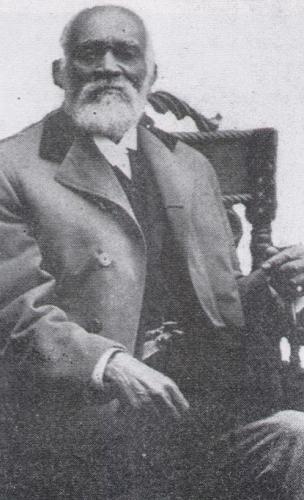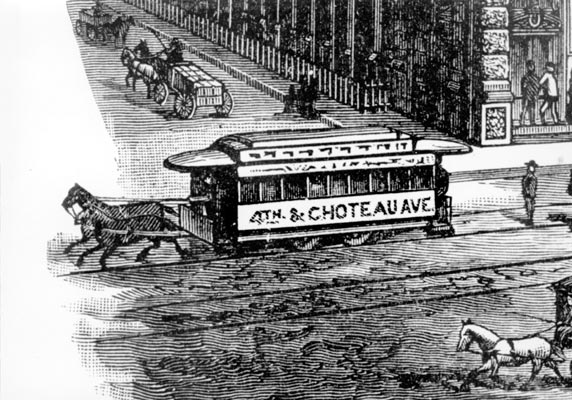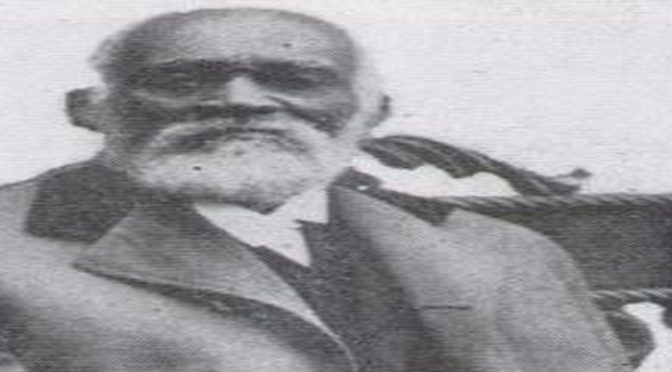Charlton Tandy was born free in a house on Main Street in Lexington, Kentucky on December 16, 1836. His parents John L. (b.1805) and Susan Tandy (b.1815), both Kentucky natives were free only because Charlton's grandparents had purchased the family’s freedom three years before his birth. Tandy and his family used their newfound freedom to help slaves escape across the Ohio River and into the North. Throughout his childhood, Tandy’s family worked to free slaves through the Underground Railroad, and as a young man, Tandy often led slaves on the route from Covington, Kentucky, to freedom in Cincinnati, Ohio. Tandy never forgot those early experiences fighting for freedom for other African Americans and would continue to work for their rights throughout his life.

Tandy moved to St. Louis in 1857 and worked Tandy Moved to St. Louis in 1857 and worked as a porter, coachman, and waiter until the Civil War began when he became post messenger at Jefferson Barracks. He enlisted and served bravely in Company B of the 13th regiment of the Missouri State Militia. The war proved good for Tandy’s standing, as he rose from state militia volunteer to captain of “Tandy’s St. Louis Guard,” an African American state militia that he recruited. At the end of the war, Tandy was honorably discharged as a captain.
His service earned Tandy the notice of several political leaders, and Tandy was able to turn his connections into patronage jobs. Tandy stated that he once took lunch in St. Louis with Gen. Grant and in 1870 dined with Gov. Crittenden at Warrensburg. His positions ranged from U.S. land agent and deputy U.S. Marshal in New Mexico and Oklahoma to Custodian of Records at the St. Louis courthouse. At heart, Tandy was a civil rights activist. Throughout his life, he worked on local issues of interest to Missouri African Americans, including fighting school and transportation segregation.
When the public streetcars in St. Louis routinely pushed black riders from inside seats to dangerous perches hanging on the outside, he organized protests and boycotts to pressure the companies to change policies. White riders could sit down inside the trolley, but black passengers had to ride while hanging on from the outside. This created a particularly dangerous situation because the horse-drawn streetcars were moving along bumpy, muddy roads paved with rough cobblestones. Black riders were often injured and sometimes even killed, simply because they were barred from taking a safer seat inside the trolley.

Williams v Bellefontaine Railway Company
Neptune and Caroline Williams filed a lawsuit against the Bellefontaine Railway line, seeking five thousand dollars in damages and an injunction. One of the conductors had pushed Caroline off when she attempted to board. Caroline who was pregnant was carrying a toddler when the incident took place. By May 1868, the St. Louis circuit court ruled that all public transportation companies had to allow Black people to ride inside the cars, however, the court only awarded one cent to Williams as damages. The streetcar drivers ignored the court order and often passed by black riders. Tandy gained fame by standing near streetcar stops where Black passengers were waiting and stepping into the path to grab the horse’s reins if the driver didn't slow down to stop. In 1870 he organized a boycott against the segregated St. Louis streetcar lines and after time in jail and litigation, integrated the streetcars.
Below is a re-enactment of a conversation that Caroline might have had with her husband Neptune on the night of the incident dramatizes the courage necessary to challenge the status quo in former slave states.
Tandy was a persistent fighter for black civil rights and active in Republican politics. He assisted James Milton Turner in fundraising to establish Lincoln Institute (Lincoln University in Jefferson City), the first school of higher education for blacks in Missouri. He successfully worked to get black educators into the St. Louis public school system. Tandy was the author of the first bill in Missouri providing for the education of negroes. In 1870, Tandy proposed through Nicholas Bell, former Excise Commissioner, a bill for schools for negroes, and it was passed. In the next session, Tandy proposed through Bell a bill for the establishment of a negro high school and it, also, was passed. Nicholas M. Bell stated, "I knew Tandy for 49 years," Bell said, "and no negro did more for his race than he."
Tandy is perhaps best remembered as a champion of the “Exodusters,” he was the first St. Louisan to aid the "Colored Exodus" from the South in 1879, he assisted 2,000 African American migrants who were leaving the post-Reconstruction South for homes in Kansas who became stranded in St. Louis. After the penniless refugees arrived in St. Louis from homes in Louisiana and Mississippi, Tandy organized the Colored Refugee Relief Board. For the next two years, the group fed, clothed, housed, and bought passage to Kansas for approximately 10,000 migrants. In addition, Tandy publicized the Exodusters’ plight, by speaking in New York, Boston, and other cities, meeting with President Rutherford B. Hayes, and testifying before Congress. In 1880 Tandy testified before the Congressional Voorhees Committee about the exodus of African Americans from the South where he urged Congress to provide aid for these refugees and to investigate and stop the violation of Negro rights in the South.
Tandy became a lawyer in 1886 when he passed the Missouri Bar Exam and was permitted to practice law in both the district court and the U.S. Supreme Court. President Grant appointed Tandy to the St. Louis Custom House, making him the first African American to be employed there.
Tandy was also a U.S. Marshall under President Harrison's administration, serving as a special agent of the General Land Office and as a timber inspector. He served as vice president of the Missouri State Republican League and in 1894 was elected to a House seat by the Republicans of the Thirty-second Senatorial District, but he was not allowed to serve.
Tandy was known as a great orator and spoke on behalf of many white politicians. A loyal Republican he did not hesitate to criticize the party for neglecting the needs of Negroes. Tandy organized Negro political clubs to encourage Negroes to vote, run for office and become involved in political parties. He predicted the decline of Republicans in St. Louis politics if they continued to ignore Negroes. His predictions came true.
Captain Charlton H. Tandy died in St. Louis in 1919, and he and his wife Annie are buried in Greenwood Cemetery, where Harriet Scott, the wife of Dred Scott, is also buried.
Tandy is still celebrated for his unending fight for civil rights. In 1938 the Charlton Tandy Recreation Center and Park were founded in the Ville neighborhood near Sumner High School, and continue to serve the community to this day. A St. Louis Zoo train engine was named in Tandy's honor and is still in operation as shown in the video below.
Captain Tandy serves as an example of the importance of civic engagement and reminds us that we must always fight for what we believe in and know is right.
Free Negro Bonds
Beginning in 1843 and until the end of the Civil War, St. Louis require all free negro to post bonds. “Know all Men by these Presents,” begins the legal boilerplate of the St. Louis free negro bond affidavits. The bond gave Tandy “license to reside in the state of Missouri, during good behavior” — in other words, conditional freedom, despite having never been a slave. If Tandy had gotten into trouble, he and Lester Babcock would have to pay $500 to the county clerk.

There were 1,500 such bonds signed in St. Louis alone. Thousands more existed in cities across the South — and, in some cases, the North. Free blacks often faced overwhelming discrimination and local segregation laws.
The richest free blacks could put up the money for these bonds themselves. But most required the signature of white allies, whether former masters, childhood playmates, abolitionist activists or bondmen, who gauged the risk and signed the form for a fee. In St. Louis, the list of white guarantors is a fascinating cross-section of the public: William Greenleaf Eliot, the antislavery Unitarian minister who founded Washington University, but also long-established slaveholding families, including the Chouteaus, the Carrs, the Lucases and the Campbells; the African-American minister and antislavery activist John Berry Meachum and the slave trader Bernard Lynch. These documents testify to the personal white-black relationships that structured the boundaries of slavery and freedom for African Americans in St. Louis.

